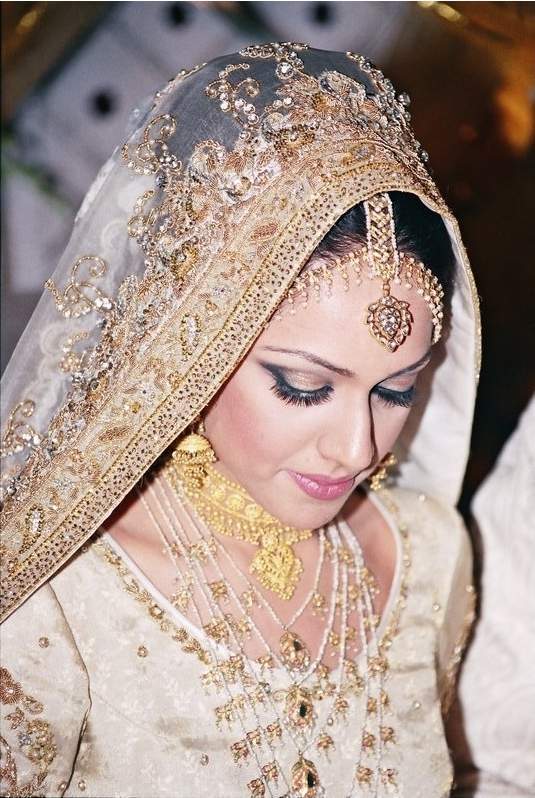Bridal 2013 Pakistani Dresses Suits Mehndi Designs Pic Jewellery Mehndi Lehengas 2013
Source:- Google.com.pk
Pakistan, an Islamic country located in South Asia and the Greater Middle East, has a great culture with rich customs. A Pakistani wedding is a great feast of fun, wearing fancy clothing, merriments, and celebrations. It is celebrated with great fervor. A Pakistani wedding is followed by several pre-wedding customs and rituals. Men and Women wear Pakistani Clothing of various styles and fashions.
It is important to note that some of the customs followed in Pakistani weddings have no foundation in Islam. However, the Pakistani culture has adopted those ceremonies and traditions from the Hindu culture.Baraat is procession of family, relatives, and friends of groom that accompany the groom to bride’s home for official wedding ceremony. Groom makes his way to the bride's home on a richly decked horse or in a car and “baraat” follows in different vehicles. Groom is given warm welcome by the bride’s family with flower garlands and rose petals. Family and relatives of the groom and the bride exchange glasses of juice or sherbet along with money. Guests are welcomed by the bride’s sisters by playfully hitting them with a stick wrapped and decorated with flowers.
Nikah is purely Islamic official wedding ceremony that usually takes place at the bride’s home. Nikah is attended by close family members, relatives, and friends of groom and bride. Usually, the men and women are made to sit separately, in different rooms, or have a purdah, or curtain, separating them. Nikah-naama (document of marriage contract) is registered in Nikah. The Nikahnaama contains several terms and conditions that are to be respected by both parties (bride & groom). It includes bride’s right to divorce her husband. Nikahnaama specifies “Meher,” the monetary amount the groom will give the bride. Meher includes two amounts; one that is due before the marriage is consummated and the other that is a deferred amount given to the bride at a time to be determined. The Meher guarantees the bride's freedom within the marriage, and acts as the bride's safety net.
The fathers of groom and bride (Walis) act as witnesses to the wedding. If father is not available, the senior male, brother or uncle performs the ceremony. Islamic Imam (called maulana or maulvi in Urdu) reads selected verses from the Quran and waits for the Ijab-e-Qubul (proposal and acceptance) of wedding. Usually, the groom's side makes proposal and the bride's side conveys her assent. Maulvi and witnesses (gavah) take the Nikahnaama to the bride and read it aloud to her. She accepts the Nikahnaama saying 'qabool kiya,' meaning 'I accept and signs it. The Nikahnaama is then taken to the groom and read aloud to him. He accepts saying 'qabool kiya and signs the document. The Maulvi and witnesses (gavah) also do sign the Nikahnaama contract and the wedding becomes legal. The Maulvi recites the Fatihah, the first chapter of the Quran, and various durud, or blessings to mark the closing of Nikah ceremony.
The groom wears a sehra, and he is given gifts by his family members. A procession called baarat, which features drums and shehnai, travels to the house of the bride for the main ceremony of marriage, which is called nikah.
Nikah happens as the nikad naama, which is the document of marriage, is registered. There are many terms and conditions mentioned in the nikah naama, and they include the right of the woman to divorce and the monetary amount that will be given to the bride by the groom. Walis or witnesses must be present during nikah, and the fathers of the bride and groom act as walis. Certain Urdu verses are read by the priest, and the bride accepts the terms and conditions of the nikah naama in front of the relatives by saying “qabool kiya”, and the wedding will be announced.










No comments:
Post a Comment